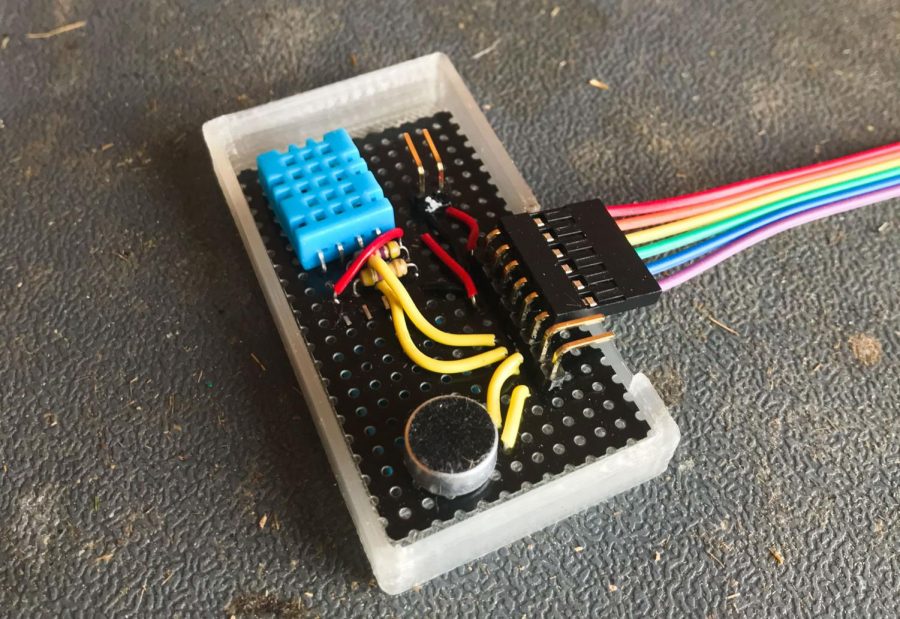Engineering students develop beekeeping device
Photo courtesy of Alison Sankey
The solar panel that is used to charge the WaggleNet hive sensor. WaggleNet is a sensor used to collect data about beehives.
Mar 14, 2018
A team of electrical and computer engineering students and their adviser found a way to collect data from beehives without opening the hives.
Opening a beehive in cooler temperatures can often be fatal for bees, but the team’s wireless monitoring system can help beekeepers collect data safely.
WaggleNet is a sensor placed in beehives that can read temperature and humidity, and beekeepers can use it at the bee research facility to collect data on their computers in real time.
“There’s a general curiosity with beekeepers as to what’s going on inside the honey bee colonies, especially during the winter time when we are unable to access the indoor colony because of the weather,” said Alison Sankey, Bee Research Facility manager and beekeeper.
Sankey said it is always nice to have more information about what the bees are doing during the winter time.
Get The Daily Illini in your inbox!
Beekeepers try to avoid opening up the colonies when the temperature is below fifty degrees, so the WaggleNet device gives them more information than just observing from the outside, she said.
Sankey said there is no need to open up the colony to see if they are still alive because honey bees form a cluster during the winter and maintain a certain temperature range in the hive depending on their activities.
“If the temperature and humidity are around the certain point, you can assume that the colony bees are still alive in the hive,” she said.
WaggleNet is collectively developed by Jimmy He and Xiaolin Wu, sophomores in Engineering, led by lecturer in Engineering Chris Schmitz.
He said the diversity in their team is the project’s lifeblood.
“Professor Schmitz, being a professional beekeeper and an ECE instructor, offered valuable firsthand suggestions on our strategic planning,” He said. “I, being a user experience designer myself, give some ideas on product design as well as feasibility of manufacturing.”
He said Wu, as a relatively new member, gave the team a lot of unique ideas and thoughts while she learned the technical aspects and caught up with the team’s development.
WaggleNet does not require direct Internet connection. He said it is unique in a way that it works like a kids’ telephone game — if the internet-facing router is out of range, WaggleNet can leverage neighbors’ connections to transmit messages until it reaches the internet.
In the future, the WaggleNet team plans to improve the device’s solar capabilities so that it can last longer without charging.






